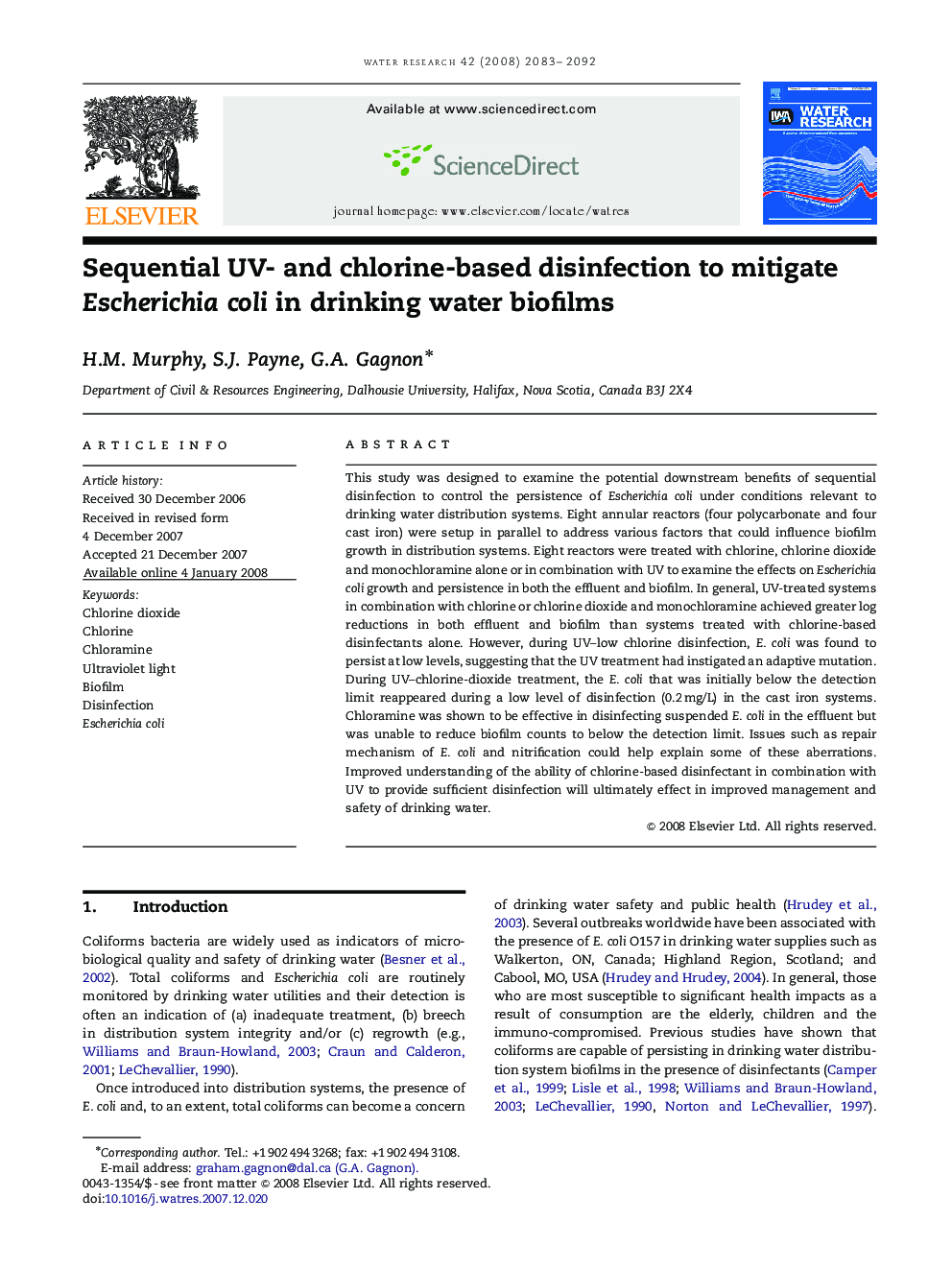| Article ID | Journal | Published Year | Pages | File Type |
|---|---|---|---|---|
| 4484936 | Water Research | 2008 | 10 Pages |
This study was designed to examine the potential downstream benefits of sequential disinfection to control the persistence of Escherichia coli under conditions relevant to drinking water distribution systems. Eight annular reactors (four polycarbonate and four cast iron) were setup in parallel to address various factors that could influence biofilm growth in distribution systems. Eight reactors were treated with chlorine, chlorine dioxide and monochloramine alone or in combination with UV to examine the effects on Escherichia coli growth and persistence in both the effluent and biofilm. In general, UV-treated systems in combination with chlorine or chlorine dioxide and monochloramine achieved greater log reductions in both effluent and biofilm than systems treated with chlorine-based disinfectants alone. However, during UV–low chlorine disinfection, E. coli was found to persist at low levels, suggesting that the UV treatment had instigated an adaptive mutation. During UV–chlorine-dioxide treatment, the E. coli that was initially below the detection limit reappeared during a low level of disinfection (0.2 mg/L) in the cast iron systems. Chloramine was shown to be effective in disinfecting suspended E. coli in the effluent but was unable to reduce biofilm counts to below the detection limit. Issues such as repair mechanism of E. coli and nitrification could help explain some of these aberrations. Improved understanding of the ability of chlorine-based disinfectant in combination with UV to provide sufficient disinfection will ultimately effect in improved management and safety of drinking water.
